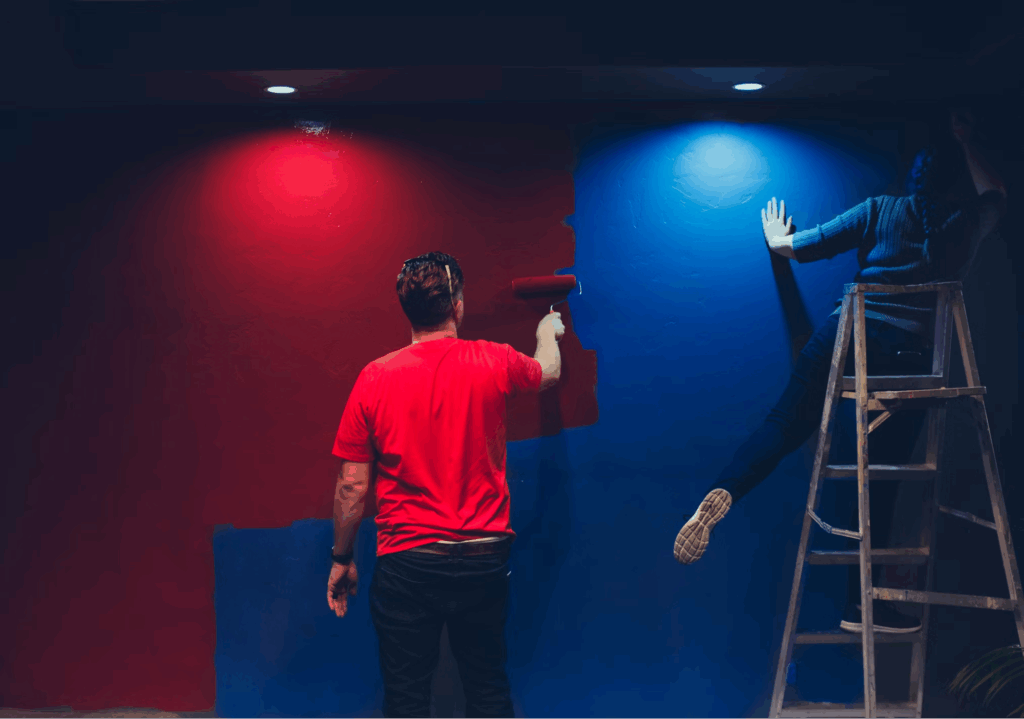Taking on an interior painting project can seem intimidating, especially if it’s your first time. Whether you’re planning a full room makeover or just want to freshen up your walls, understanding the basics makes a huge difference. With the right tools, a bit of prep, and a steady approach, painting your home can be both satisfying and cost-effective. This guide will help you get started with confidence, one step at a time.
Choosing the Right Professionals
Before you get caught up in colors and brushes, it’s smart to think about who’s doing the work. Not everyone has the time or ability to take on a full paint job, and that’s perfectly okay. Hiring reliable professionals can ensure smooth, high-quality results and save you from common DIY mistakes. Whether it’s your first home or your tenth, working with experienced painters gives you peace of mind.
Finding the right professionals for your painting project can make all the difference in achieving a high-quality finish. Plenty of homeowners across Seattle turn to professionals like the team at Paintzone when they want the job done right. Their knowledge of paint types, surfaces, and techniques makes the entire process more efficient. They can also offer advice on what products to use and how to achieve the look you’re going for, something that’s tough to get from a hardware store clerk.
Picking the Right Paint
Once you’ve decided who’s doing the job, the next step is choosing your paint. Think about how the room is used. High-traffic areas like hallways benefit from more durable finishes, while bedrooms tend to work well with matte paint for a softer, cozier atmosphere.

Pay attention to sheen levels. Glossy finishes reflect more light and can make a room feel bigger and brighter, while flat or eggshell finishes offer a calmer vibe. Color also plays a huge role. Try paint samples on different parts of the wall to see how they look in both natural and artificial light before committing.
Getting the Tools Ready
Even if you’re hiring professionals, knowing what tools are involved helps you understand what to expect. If you’re going DIY, this part is even more important. You’ll need quality brushes for edges and corners, rollers for larger areas, painter’s tape, drop cloths, a paint tray, and a sturdy ladder for hard-to-reach spots.
Having all your tools prepped and within reach saves time once you begin. It also makes the job less frustrating, nothing derails a project faster than constantly stopping to find the right gear.
Prepping Your Space
Preparation is the foundation of a good paint job. Start by moving or covering furniture and taping off any areas you don’t want painted, like trim or baseboards. Remove switch plates, outlet covers, and wall hangings. Then patch up holes or cracks and sand down uneven surfaces.
Cleaning the walls is a step many people skip, but it’s important. Dust, grease, and residue can affect how well the paint sticks. A quick wipe-down with a mild cleaner goes a long way. Once everything is patched, sanded, and cleaned, let it dry completely before picking up a brush.
Painting with Confidence
When it’s time to paint, start by cutting in around the edges with a brush before rolling the larger areas. This helps keep lines clean and lets you blend brush and roller strokes smoothly. Use a “W” or “M” pattern when rolling so the paint spreads evenly and doesn’t pool or streak.

Take your time. Rushing usually leads to splatters and missed spots. Let each coat dry thoroughly before applying another. Even if the paint claims to be one-coat coverage, it’s worth being patient for the best finish.
Wrapping Up and Clean-Up
Once the final coat is dry, take off the painter’s tape slowly to avoid peeling the fresh paint. Replace any hardware or outlet covers, and touch up small imperfections with a detail brush if needed.
If you’ve done the painting yourself, clean your brushes and rollers right away so you can reuse them in the future. Store leftover paint in a cool, dry place in case you need it for touch-ups later on. A clean finish and a tidy space make the whole project feel complete.
Interior painting doesn’t have to be complicated, although it can feel like a big project when you’re standing in a room full of drop cloths and open paint cans. Whether you’re painting one wall or a whole house, getting the basics right will set you up for success. Choosing the right professionals, picking your colors carefully, and preparing properly can completely transform your home’s atmosphere. It’s a project you can approach with creativity, confidence, and maybe even a little fun.
